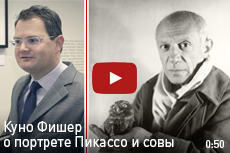Genius in the studio and behind the Paris art scene








Georges Braque. Photos presented: Collection Dr. Kuno Fischer, Galerie Fischer, Switzerland Courtesy: Dr. Kuno Fischer, Galerie Fischer, Switzerland ©Estate Michel Sima
Jean Cocteau. Photos presented: Collection Dr. Kuno Fischer, Galerie Fischer, Switzerland Courtesy: Dr. Kuno Fischer, Galerie Fischer, Switzerland ©Estate Michel Sima
Dora Maar. Photos presented: Collection Dr. Kuno Fischer, Galerie Fischer, Switzerland Courtesy: Dr. Kuno Fischer, Galerie Fischer, Switzerland ©Estate Michel Sima
Alberto Giacometti. Photos presented: Collection Dr. Kuno Fischer, Galerie Fischer, Switzerland Courtesy: Dr. Kuno Fischer, Galerie Fischer, Switzerland ©Estate Michel Sima
Man Ray. Photos presented: Collection Dr. Kuno Fischer, Galerie Fischer, Switzerland Courtesy: Dr. Kuno Fischer, Galerie Fischer, Switzerland ©Estate Michel Sima
Juan Miro. Photos presented: Collection Dr. Kuno Fischer, Galerie Fischer, Switzerland Courtesy: Dr. Kuno Fischer, Galerie Fischer, Switzerland ©Estate Michel Sima
Francis Picabia. Photos presented: Collection Dr. Kuno Fischer, Galerie Fischer, Switzerland Courtesy: Dr. Kuno Fischer, Galerie Fischer, Switzerland ©Estate Michel Sima
Pablo Picasso. Photos presented: Collection Dr. Kuno Fischer, Galerie Fischer, Switzerland Courtesy: Dr. Kuno Fischer, Galerie Fischer, Switzerland ©Estate Michel Sima
Voronezh, 2.06.2019—30.06.2019
exhibition is over
Kramskoy art museum of Voronezh region
Revolutsii avenue, 18
http://mkram.ru/en/
Share with friends
Curators: Kuno Fischer, Alisa Labas
Exhibition shedule
-
17.02.2017—14.05.2017
Moscow
Multimedia Art Museum
-
13.07.2017—1.10.2017
Samara
Museum of Modern
-
31.05.2018—2.09.2018
Saint Petersburg
Erarta Museum of Contemporary Art
-
2.06.2019—30.06.2019
Voronezh
Kramskoy art museum of Voronezh region
For the press
As part of the Tenth Moscow International Biennale ‘Fashion and Style in Photography 2017’, MAMM presents an exhibition by renowned French photographer and sculptor Michel Sima (real name Michał Smajewski) — ‘Genius in the Studio’ from the Kuno Fischer Collection, Galerie Fischer, Switzerland. Photography was more a hobby than a profession for Sima, who regarded himself primarily as a sculptor. Yet it was photography that brought him international recognition. In the course of 10 years he portrayed artist friends such as Pablo Picasso, Henri Matisse, Francis Picabia, Ossip Zadkine, Alberto Giacometti, Jean Cocteau, Man Ray, Marcel Duchamp, André Derain, Le Corbusier, Marc Chagall, Joan Miró, and many others. He was also indebted to this friendship with artists for his assumed name. The idea for his pseudonym was an anagram first suggested by Paul Éluard: SIMA is AMIS (friends) spelt backwards. The artist and his oeuvre was the theme that most fascinated Michel Sima as photographer. In all his images Sima pictured artists at work in their studios. But this was not purely a record of various stages of the artistic process. His amicable relations with the subjects and the trust that prevailed in every location enabled him to produce unique images that show subtle nuances of each character’s personality, and to convey an unrepeatable creative aura. Each artist posing among his works in the congenial surroundings of his own studio apparently reveals his identity to the viewer. Jean Cocteau wrote in his preface to Michel Sima’s ‘21 Visages d’Artistes’, the photo album dedicated to the legendary École de Paris and published in 1959: ‘My dear Sima, you had the commendable idea of capturing the faces of artists as if in flight — the excited faces of artists in combat with the monsters they themselves engendered, the riders of the Apocalypse that drive us into a labyrinth where we are seized by the wild, ambiguous desire to at least see the Minotaur, if not actually encounter it.’ Michał Smajewski was born into a Jewish family in the city of Slonim, southeast Poland, in 1912. He attended a Jewish school, where he learnt drawing and sculpture and ardently dreamed of becoming an artist and settling in Paris. At the age of 17 he persuaded his parents to send him to Paris, where he entered the Académie de la Grande Chaumière and began studying sculpture. After only one year at the academy he decided he would learn more by actually working with sculptors in their studios. This was a crucial decision, since his work with sculptors allowed him to meet and forge friendships with artists and writers. Sima studied with Ossip Zadkine, one of the most eminent sculptors of the period. In Zadkine’s studio he attracted the attention of Jean Cocteau. Through the latter Sima was introduced to Paul Éluard and Francis Picabia, soon becoming a frequent visitor to the latter’s Sunday gatherings, where the cream of literary and artistic Paris flocked together. At his juncture Sima turned to photography. He produced photo reportages for press agencies and was occasionally commissioned for portrait pictures. A surviving image from that time is the portrait of Antonin Artaud. Even so, Sima did not see himself as a photographer. Rather he identified himself as a sculptor, and sought to find a niche in the art world in that capacity. He shared his Paris studio on Impasse Ronsin with the artist René Besset. His neighbour was Constantin Brâncuși, with whom Sima also worked for a while. Before long he became friendly with Pablo Picasso and Max Ernst, leading lights of the Parisian art world. Paris was the focus of the art world in prewar Europe. During those years a unique phenomenon that became known as the École de Paris was evolving. This combined the French spirit with the fiery temperament of other nations. The École de Paris became a vast melting pot in which diverse artistic tendencies merged together and provided mutual enrichment. Michel Sima was a fully-fledged participant in the movement. He received commissions as a sculptor and took part in group exhibitions. Persecution of the Jews after the outbreak of war forced Sima to flee Paris and join Picabia at Golfe Juan in the unoccupied Zone Libre. But even there he was unable to escape arrest. In August 1942 the French authorities detained him and handed him to the Germans, who duly deported Sima to Auschwitz. After release from the concentration camp Sima returned to the Côte d’Azur, spiritually and physically broken, hoping to meet his old friends again. In Golfe Juan he was reunited with Picasso, who brought Sima back to life in the true sense of the word. After the war Pablo Picasso had set up home in the Château Grimaldi at Antibes and begun work on ‘La Joie de Vivre’, proving to all that war could not destroy the human zest for life and anticipating a positive future and creative freedom in the new world. Picasso proposed that Sima keep a day-by-day photographic record of the creative process for the painting. In the first few hours of his assignment Sima broadened his task, believing that the presence of the artist himself should not be excluded from the process, since a work lives only through the energy of its creator. This led to photographs in the studio, where the artist is seen at work, surrounded by his pictures. For Sima photography acted not only as a lifeline and therapeutic means to restore his creative urge, but also determined the direction of his subsequent work: he thereby discovered his own style and theme. Over the next decade he became a photographer well known among artists. The result was his album ‘Picasso à Antibes’ (1948), which fully corresponded to Sima’s concept that an artist and his oeuvre are one and the same. In the early 1950s Sima returned to Paris and settled in the famous artists’ colony known as La Ruche (literally, The Beehive). Chagall once said that you emerged from La Ruche either dead or famous. The inhabitants included artists, sculptors, photographers, writers and poets. Here was an artists’ colony in the truest sense, an islet of cosmopolitanism on the outskirts of Paris. La Ruche was also referred to as the ‘Villa Medici of Misery’. Sima loved this place, and his son was born in La Ruche in 1962 and grew up there. When the artists’ colony had to be saved from demolition Sima was among the artists that personally called for preservation. With great pleasure Sima began portraying his friends again, for almost all his prewar acquaintances had returned to Paris after the war. In just a few years he took portrait photographs of 60 artists as the École de Paris was gradually restored to life after the fighting ended. He compiled a photo chronicle of this ‘melting pot of arts’ that has unparalleled significance as a historic document. In 1959 the publisher Nathan issued his photo album ‘21 Visages d’Artistes’, featuring portraits of Jean Cocteau, Francis Picabia, Ossip Zadkine, Alberto Giacometti, Hans Arp, Dora Maar, Fernand Léger, Max Ernst, Auguste Herbin, Wifredo Lam, Man Ray, Marcel Duchamp, André Derain, Kees van Dongen, Le Corbusier, Joan Miró and others. Michel Sima’s photography shows the huge diversity of styles and movements that existed simultaneously in Paris, and the interaction between different generations of artists. But Sima’s passion for photography faded when he first saw the photo album ‘21 Visages d’Artistes’. His disappointment at the poor quality print was immeasurable. Sima resolved that he would never publish a single photograph again and devoted himself to sculpture until his death in 1987. Sima’s career as a photographer had lasted just ten years. But in that decade his achievements were extraordinary. ‘He is not merely a photographer, but a photographer that opened the door behind the scenes, to a creative process that was previously inaccessible... Sima has portrayed the outstanding artists of the last century, his friends. He was part of their world, he came to them not as a professional portrait photographer and observed them not as a journalist — in fact he numbered among them. He saw them just as they saw him, in good faith... What he reveals is something you will find nowhere else: brotherly unity, a striking, remarkable mutual affinity between photographer and model,’ wrote Michel Sima’s close friend Jean-Luc Meysonnier in his preface to the book ‘Michel Sima: Ateliers d’Artiste’, published in 2008.









